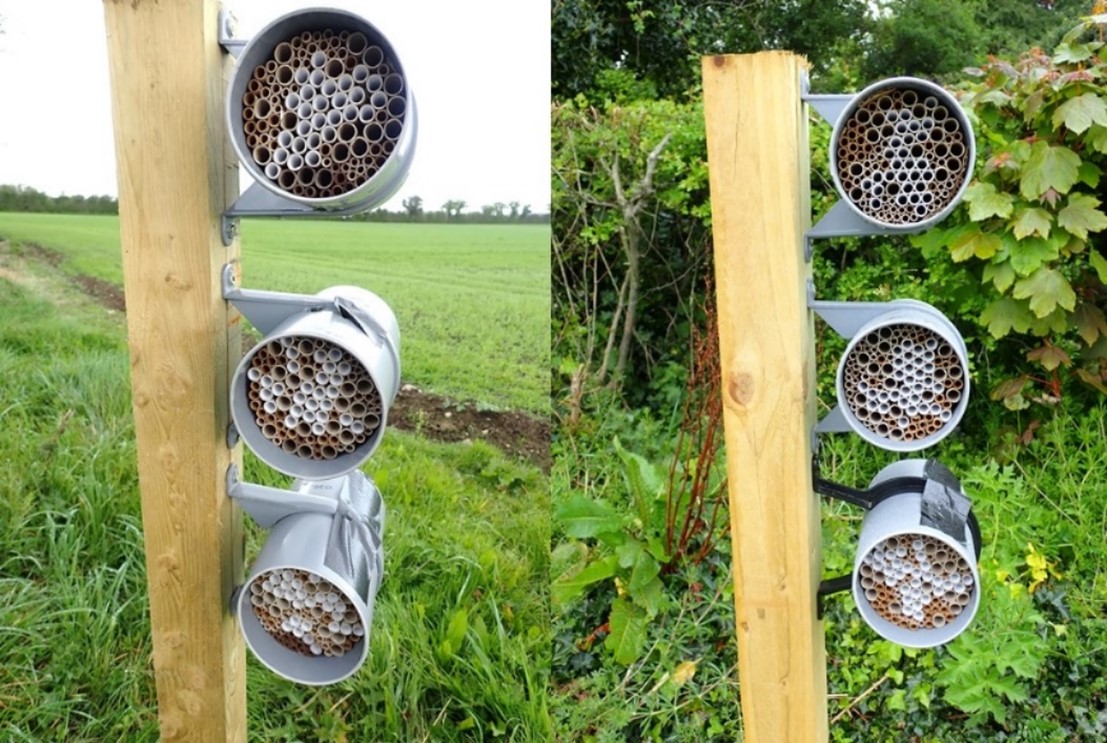Stem-nesting Hymenoptera in Irish farmland: empirical evaluation of artificial trap nests as tools for fundamental research and pollinator conservation
DOI:
https://doi.org/10.26786/1920-7603(2022)697Keywords:
bee hotels, cavity-nesting, potter wasps, mason bees, insect declinesAbstract
Insect pollinators are suffering global declines, necessitating the evaluation and development of methods for long-term monitoring and applied field research. Accordingly, this study evaluated the use of trap nests (“bee hotels”) as tools for investigating the ecology of cavity nesting Hymenoptera within Irish agricultural landscapes. Three trap nests consisting of 110 mm diameter plastic pipe containing 100 cardboard nest tubes of varying diameter were placed at eight apple orchards and eight oilseed rape sites and left in the field for five months. Sealed nest tubes occurred at 15 of the 16 sites, and in 77% of the 48 nests. However, only 7% of the 4800 individual nest tubes were sealed, and only 4% produced cavity-nesting Hymenoptera. Three cavity nesting bee species (Hylaeus communis, Osmia bicornis, Megachile versicolor) and two solitary wasp species (Ancistrocerus trifasciatus, A. parietinus) emerged from nest tubes. There were significant differences among species in terms of emergence date and the diameter of nest tubes from which they emerged, the latter allowing the calculation of niche width and niche overlap, and informing choice of tube size in future studies/conservation efforts. Trap nests, therefore, offer a valuable tool for fundamental ecological research and a model system for investigating interactions between stem-nesting species within their wider ecological networks. The ability of trap nests to actually increase farmland pollinator abundance and diversity as part of agri-environment schemes requires additional investigation. However, used in sufficient numbers, these trap nests provide valuable biogeographical data for cavity nesting Hymenoptera and offer a viable means for long term monitoring of these species in Irish farmland.

Downloads
Published
How to Cite
Issue
Section
License
Copyright (c) 2022 Simon Hodge, Irene Bottero, Robin Dean, Stephanie Maher, Jane Stout

This work is licensed under a Creative Commons Attribution 4.0 International License.
JPE is an open access journal which means that all content is freely available without charge to the user or his/her institution.
Authors who publish with this journal agree to the following terms:
1) Authors retain copyright and grant the journal right of first publication with the work simultaneously licensed under a Creative Commons Attribution License that allows others to share the work with an acknowledgement of the work's authorship and initial publication in this journal.
2) Authors are able to enter into separate, additional contractual arrangements for the non-exclusive distribution of the journal's published version of the work (e.g., post it to an institutional repository or publish it in a book), with an acknowledgement of its initial publication in this journal.
3) Authors are permitted and encouraged to post their work online (e.g., in institutional repositories or on their website) prior to and during the submission process, as it can lead to productive exchanges, as well as earlier and greater citation of published work (See The Effect of Open Access).
To assure a broader targeted audience, content will be included into databases (such as EBSCO) and directories (such as DOAJ).











